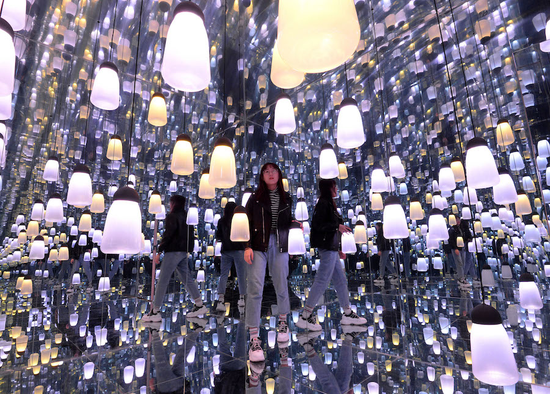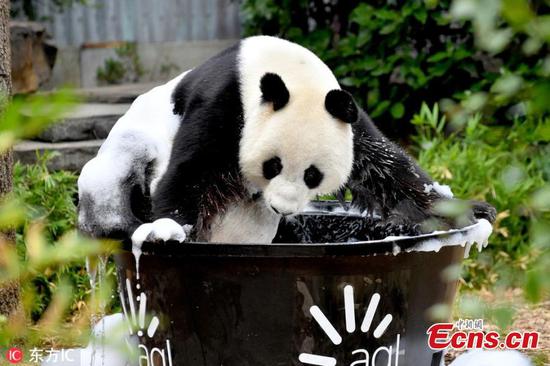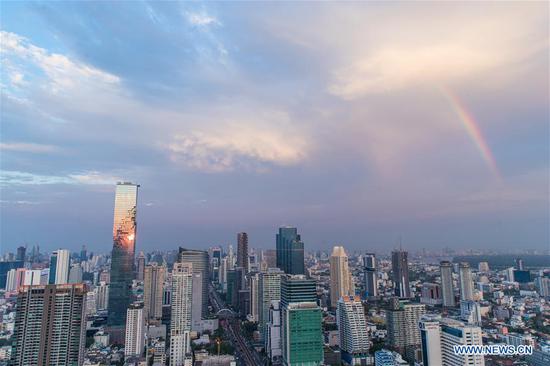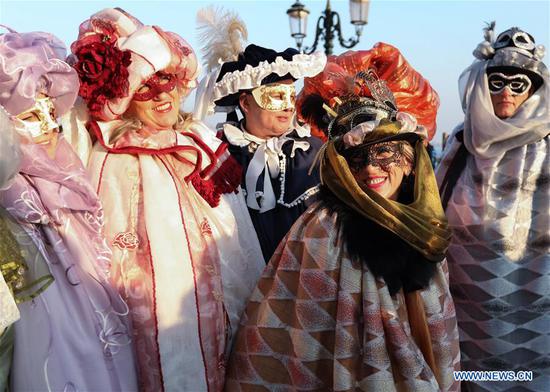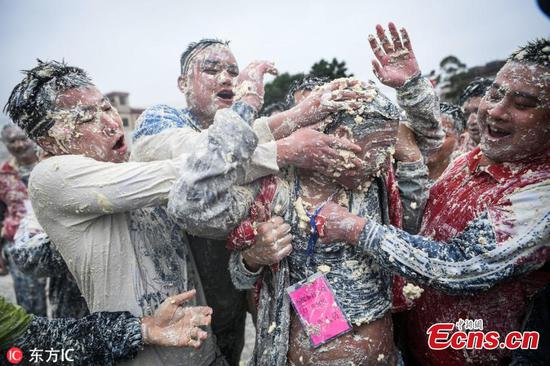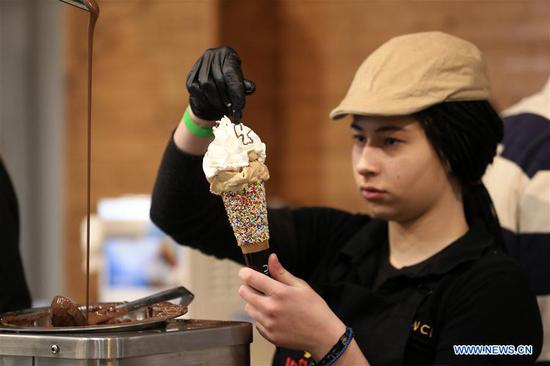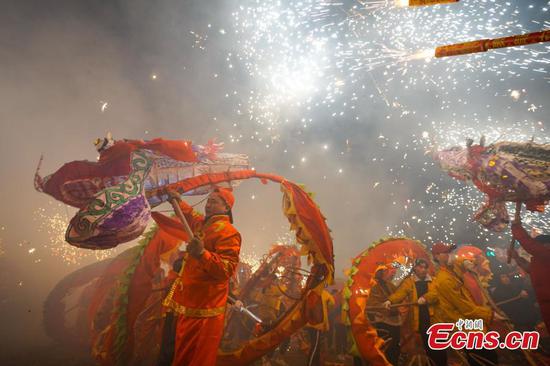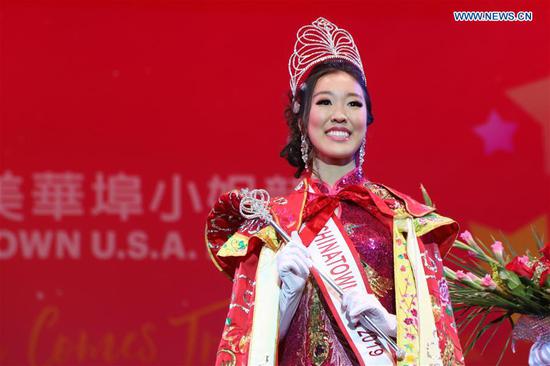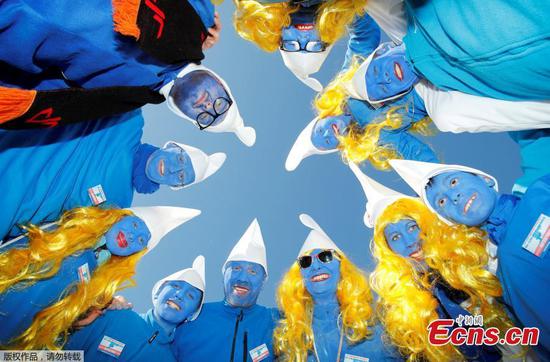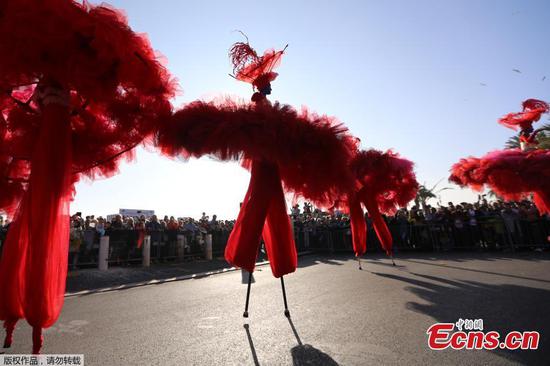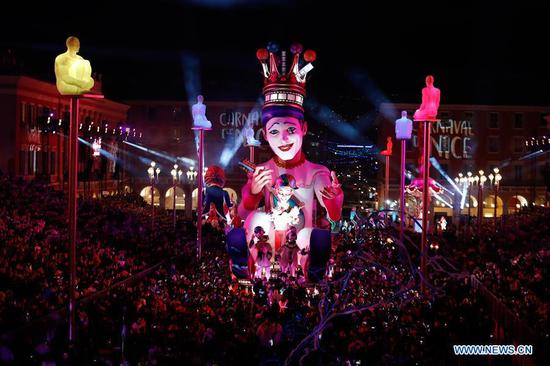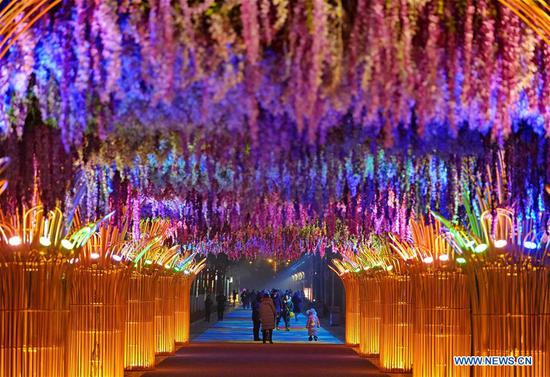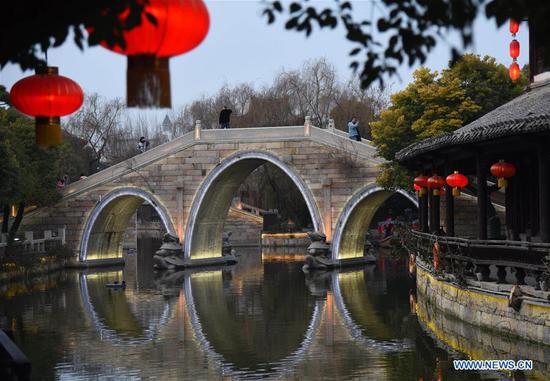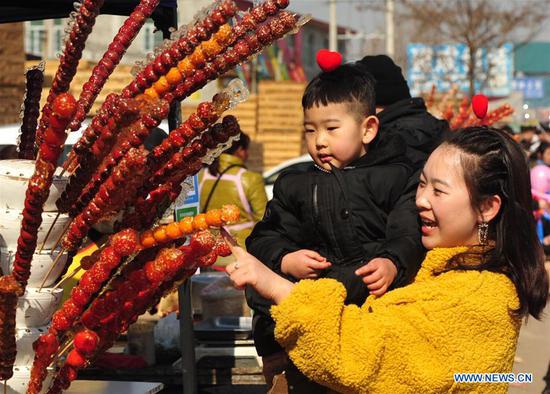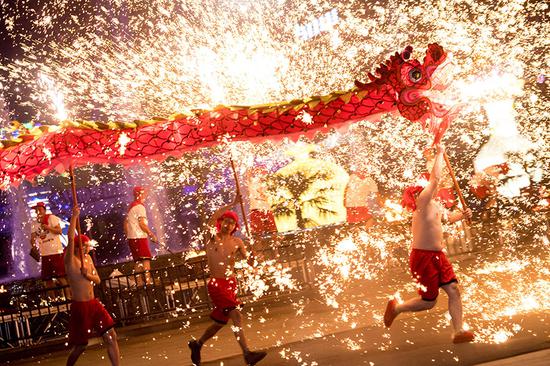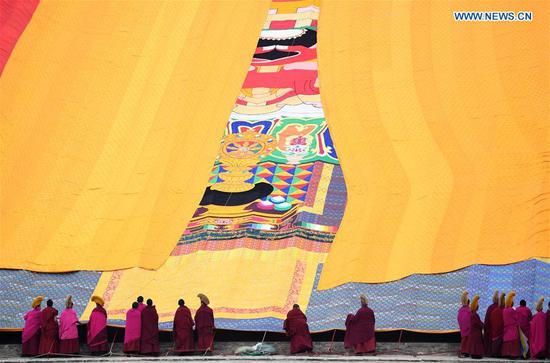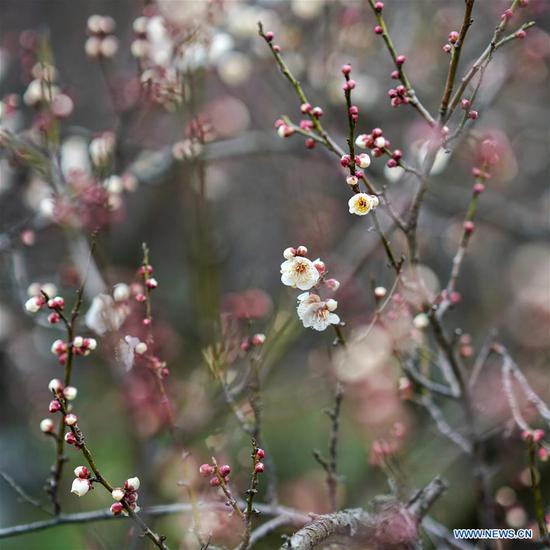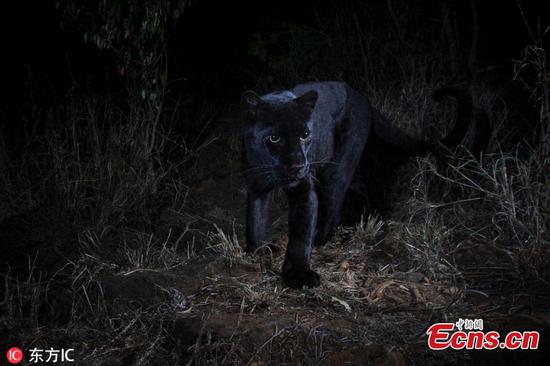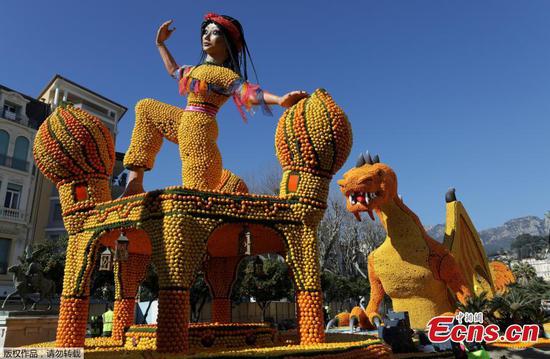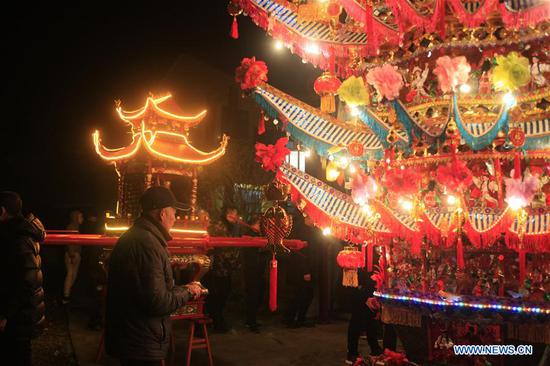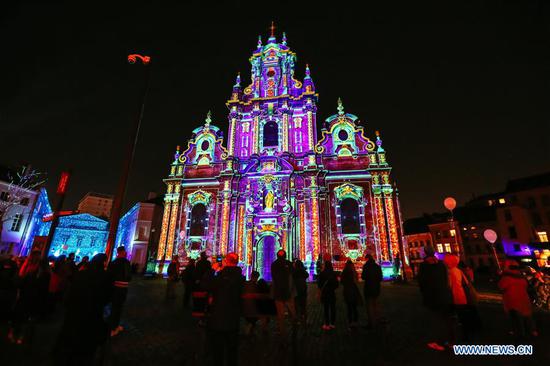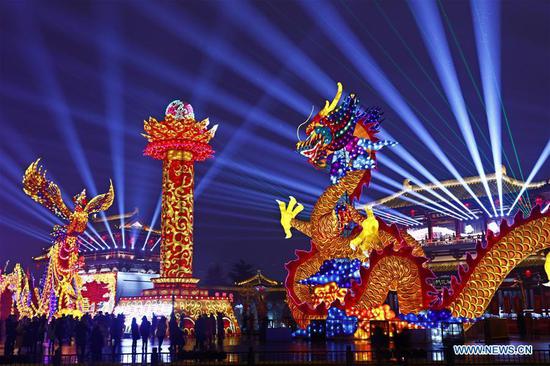
Visitors view lanterns at a scenic spot in Xi'an, capital of northwest China's Shaanxi Province, Feb. 17, 2019. Many places across the country are decorated with lanterns to celebrate the upcoming Lantern Festival, which falls on Feb. 19 this year. (Xinhua/Jiao Hongtao)
Arriving on the 15th day of Zheng Yue, or the first month of the Chinese lunar year, the Lantern Festival falls on February 19 this year.
Lighting lanterns, solving lantern riddles, setting off fireworks, eating Tangyuan and enjoying family time are all traditional activities related to the Lantern Festival. But do you know how they all began?
Emperor Ming and the Buddhist monks
Emperor Ming of the Eastern Han Dynasty heard that on the 15th day of the first month of the lunar year, monks would watch sarira and light lanterns to show respect for Buddha.
The emperor then ordered that from the imperial palace to the temples, people of all social classes should hang lanterns that evening.
The activity gradually turned into a grand festive event, and spread from the Central Plain where the capital was located to all areas across China.
The Jade Emperor and the fairy crane
A long time ago, a fairy crane got lost on Earth and was killed by a hunter who was ignorant of the bird's origin. In the agrarian age, it was normal for villagers to kill wild beasts to protect humans and property.
However, the Jade Emperor, the ruler of heaven and the owner of the crane, became angry and decided to punish the man's world by setting it on fire. The emperor's daughter felt sympathetic and informed the villagers of the looming disaster.
The villagers lit lanterns and set off fireworks and firecrackers from the 14th to the 16th of the first lunar month. Looking from afar, the Jade Emperor thought the village was already burning and the village was spared.
The tradition has lived on ever since.
Scholar-official Dongfang Shuo and maid Yuan Xiao
Dongfang Shuo was a scholar-official and court jester during the Han Dynasty. Once in the royal palace, he encountered a maid who was about to commit suicide because of homesickness. He saved her and promised her a family reunion with his help.
One day, Dongfang set up a fortune-telling stall on the street, and people crowded in begging to hear their fortune. Surprisingly, everyone got the same prediction – a disastrous fire would burn down the city. People panicked and asked Dongfang for help. He replied that they could consult a fairy in red who was sent to burn the city on the 13th of the month.
When the fairy, who was actually Yuan Xiao, arrived, people begged her for mercy. She left a decree from the God of Fire that directed the people to ask the emperor for help.
The people brought the decree to the emperor. Accepting the advice of Dongfang, the emperor gave an order: In the palace, Yuan Xiao should make Tangyuan, a sweet ball-shaped dumpling made with glutinous rice, to worship the God of Fire, since the dessert was the God's favorite, and each household should do the same.
Also, lanterns should be lit up everywhere and fireworks should be set off across the city. Residents living outside the capital should come in for a gathering. The fireworks, lanterns and firecrackers were supposed to convince the God of Fire that the city was already burning, thus saving the residents from doom.
On the 15th, Yuan Xiao reunited with her family in the city. The city was spared from any disaster and the traditions have continued. Because Yuan Xiao is known as a skilled Tangyuan maker, the Lantern Festival is also called Yuan Xiao Festival.










